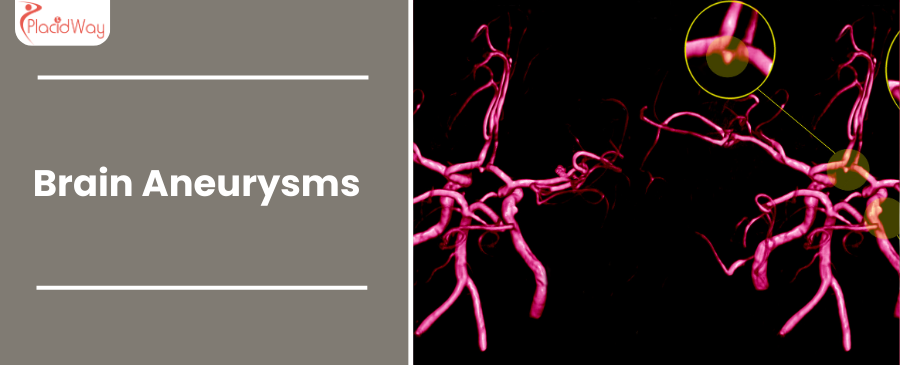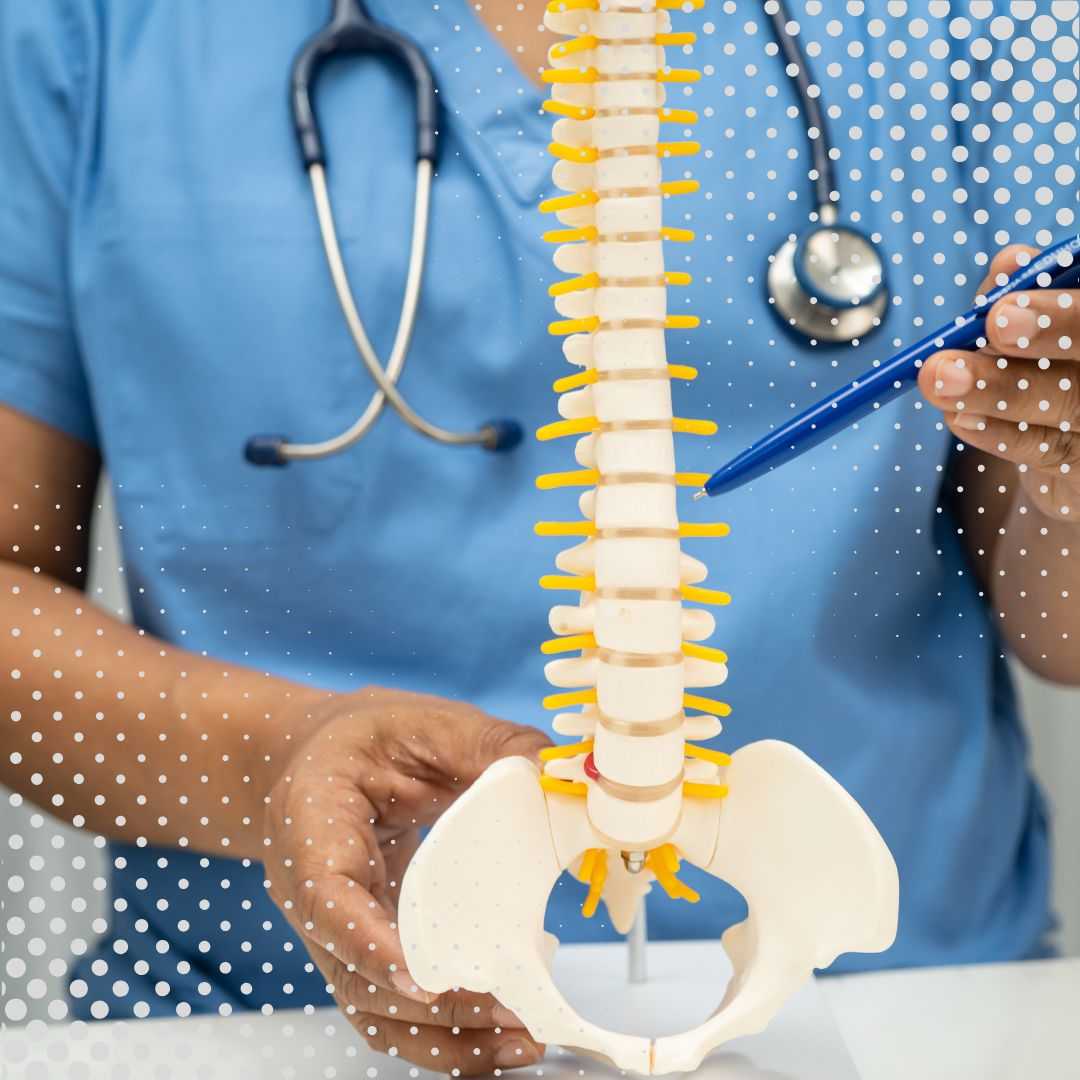
Understanding Brain Aneurysms: Your Guide to Expert Care and Treatment Abroad
The thought of a brain aneurysm can be daunting, bringing with it a whirlwind of questions and concerns. A brain aneurysm is a weak, bulging spot on the wall of a brain artery, resembling a tiny balloon. While many aneurysms remain small and never cause problems, a ruptured brain aneurysm can lead to a hemorrhagic stroke, a life-threatening event requiring immediate medical attention.
For those facing this diagnosis, understanding the condition, its symptoms, and the available treatment options is the first crucial step. The good news is that advancements in neurosurgery and interventional radiology offer effective ways to treat brain aneurysms, whether they've ruptured or are detected incidentally. However, accessing timely and affordable care can be a challenge in many parts of the world, leading many to explore medical tourism for brain aneurysm treatment.
This comprehensive guide is designed to empower you with knowledge, addressing common questions like "what is a brain aneurysm" and "brain aneurysm treatment options." We'll explore symptoms, causes, types of procedures, recovery expectations, and crucially, how esteemed medical destinations worldwide are providing exceptional care at a more accessible cost. If you're considering treatment abroad, or simply want to understand brain aneurysms better, you're in the right place.
What are the common symptoms of a brain aneurysm?
Most brain aneurysms are "silent" and don't cause any symptoms until they rupture. They are often discovered incidentally during imaging tests for other conditions. However, a large unruptured aneurysm can press on brain tissues and nerves, leading to symptoms such as:
- Headache (localized pain above or behind the eye)
- Dilated pupil
- Change in vision or double vision
- Pain above or behind one eye
- Numbness or weakness on one side of the face
- Drooping eyelid
A ruptured aneurysm, on the other hand, is a medical emergency and typically presents with a sudden, excruciating headache described as the "worst headache of my life." This "thunderclap headache" is often accompanied by:
- Nausea and vomiting
- Stiff neck
- Blurred or double vision
- Sensitivity to light (photophobia)
- Seizures
- Loss of consciousness
- Confusion or altered mental state
Recognizing these signs is critical, especially for a ruptured aneurysm, as immediate medical attention can significantly improve outcomes.
What causes brain aneurysms and what are the risk factors?
Brain aneurysms develop when the walls of an artery in the brain thin and weaken over time, eventually bulging out. While the exact reason for this weakening isn't always clear, several factors contribute to their formation and growth:
- High Blood Pressure (Hypertension): Chronic high blood pressure puts extra stress on artery walls.
- Smoking: Nicotine and other chemicals in cigarettes damage blood vessel walls, increasing inflammation and weakening them.
- Atherosclerosis: The hardening and narrowing of arteries due to plaque buildup can weaken vessel walls.
- Drug Abuse: Particularly cocaine use, can inflame and weaken blood vessel walls.
- Genetics: A family history of brain aneurysms can increase your risk, suggesting a hereditary predisposition to weaker blood vessels.
- Certain Medical Conditions: Conditions like polycystic kidney disease, Ehlers-Danlos syndrome, or Marfan syndrome can weaken connective tissues, including those in blood vessels.
- Infections: Rarely, an infection can weaken an artery wall, leading to a mycotic aneurysm.
- Head Trauma: Severe head injuries can sometimes damage blood vessels and lead to aneurysm formation.
Understanding these risk factors can help in prevention strategies and prompt monitoring, especially for those with a family history or pre-existing conditions.
What are the different types of brain aneurysm treatments available?
Treatment for a brain aneurysm typically aims to prevent its rupture or, if it has already ruptured, to stop the bleeding and prevent re-bleeding. The primary treatment options include:
- Surgical Clipping (Craniotomy): This is a traditional open-brain surgery. A neurosurgeon removes a section of your skull to access the aneurysm. A tiny metal clip is then placed at the neck of the aneurysm to seal it off from the blood vessel, preventing blood from entering it. This is a highly effective, often permanent solution.
- Endovascular Coiling (Minimally Invasive): This procedure involves inserting a catheter into an artery (usually in the groin) and guiding it through the blood vessels to the aneurysm in the brain. Tiny platinum coils are then deployed into the aneurysm, filling it and blocking blood flow, causing the blood to clot and seal off the aneurysm. This is less invasive than clipping and generally has a quicker recovery time.
- Flow Diversion: For large or complex aneurysms, a flow diverter stent might be used. This is a mesh-like tube placed in the parent artery across the neck of the aneurysm. It diverts blood flow away from the aneurysm, allowing the aneurysm to clot off and the artery wall to heal over time.
- Observation (Watchful Waiting): For small, unruptured aneurysms with low risk of rupture, doctors might recommend regular monitoring with imaging scans to check for changes in size or shape, along with managing risk factors like blood pressure.
The choice of treatment depends on various factors, including the aneurysm's size, location, and shape, as well as your overall health and whether the aneurysm has ruptured.
Who is eligible for brain aneurysm treatment, and when is it necessary?
Deciding on brain aneurysm treatment is a complex process that involves careful consideration of several factors. Generally:
- Ruptured Aneurysms: If an aneurysm has ruptured, treatment is almost always necessary and urgent to stop the bleeding and prevent re-bleeding, which carries a high mortality rate.
- Unruptured Aneurysms: For unruptured aneurysms, the decision to treat is based on a risk-benefit analysis. Factors considered include:
- Size and Location: Larger aneurysms and those in certain locations (e.g., posterior circulation) have a higher risk of rupture.
- Symptoms: If an unruptured aneurysm is causing symptoms by pressing on nerves, treatment may be recommended to alleviate these.
- Patient Health: Overall health, age, and co-existing medical conditions influence the ability to withstand surgery or endovascular procedures.
- Family History: A strong family history of ruptured aneurysms can increase the perceived risk.
- Lifestyle Factors: Uncontrolled high blood pressure, smoking, and drug use can increase rupture risk.
Patients who are in good overall health and have aneurysms deemed high-risk for rupture are typically strong candidates for preventative treatment. Conversely, elderly patients with significant health issues or very small, low-risk aneurysms might be advised for observation.
What is the typical recovery time and what can I expect after brain aneurysm treatment?
Recovery from brain aneurysm treatment is highly individual and depends significantly on the type of procedure performed (clipping vs. coiling) and whether the aneurysm had ruptured. Generally:
- After Endovascular Coiling: This minimally invasive procedure often allows for a quicker initial recovery. Patients typically spend 1-3 days in the hospital. Full recovery at home might take 1-2 weeks, with gradual return to normal activities. Some fatigue or headaches are common.
- After Surgical Clipping: This is a more invasive open-brain surgery. Hospital stays are usually longer, ranging from 4-7 days, with some time in intensive care. Initial recovery at home can take 4-6 weeks, and a full return to all activities might span several months. Patients may experience headaches, fatigue, and scalp numbness.
For those who had a ruptured aneurysm, recovery is more complex and prolonged. It often involves rehabilitation for potential neurological deficits like speech problems, weakness, or cognitive changes. This could include physical therapy, occupational therapy, and speech therapy, extending recovery for months or even years.
During recovery, it's crucial to follow your doctor's instructions, manage pain, avoid strenuous activities, and attend follow-up appointments. Regular imaging might be necessary to ensure the aneurysm remains stable.
What are the potential risks and side effects of brain aneurysm procedures?
Like any medical procedure, brain aneurysm treatments carry potential risks and side effects. While neurosurgeons take every precaution, it's important to be aware of them:
- Stroke: A risk in both coiling and clipping, due to blood clots, vessel damage, or changes in blood flow during the procedure. This can lead to permanent neurological deficits.
- Bleeding: Hemorrhage can occur during or after surgery, potentially requiring further intervention.
- Infection: Risk of infection at the surgical site (for clipping) or insertion site (for coiling), or intracranial infection.
- Brain Damage: Potential for temporary or permanent damage to brain tissue, affecting cognitive function, speech, or motor skills.
- Re-bleeding/Re-rupture: A small chance the treated aneurysm could re-bleed or that a new aneurysm could form.
- Vasospasm: A common complication after a ruptured aneurysm, where blood vessels in the brain narrow, reducing blood flow and potentially causing further damage.
- Anesthesia Risks: General risks associated with anesthesia, such as allergic reactions or breathing problems.
- Specific to Clipping: Headaches, swelling, and potential nerve damage causing facial weakness or numbness.
- Specific to Coiling: Coils can sometimes compact over time, requiring additional procedures. There's also a risk of the catheter perforating a vessel.
Your medical team will discuss these risks thoroughly, weighing them against the risks of leaving the aneurysm untreated.
How do brain aneurysm treatment costs compare worldwide?
The cost of brain aneurysm treatment can be a major concern for many patients, especially in countries with high healthcare expenses. There's a vast global disparity in pricing for these complex procedures. Here’s a general comparison:
| Country | Estimated Cost Range (USD) | Notes |
|---|---|---|
| United States | $50,000 - $150,000+ | Highest costs, often includes extensive pre- and post-op care. |
| United Kingdom | $40,000 - $100,000+ | Similar to US, can be slightly lower in private sector. |
| Turkey | $15,000 - $40,000 | Excellent value, advanced facilities, experienced surgeons. |
| India | $10,000 - $30,000 | Very competitive, renowned specialists, long waiting lists possible. |
| Mexico | $15,000 - $35,000 | Good option for North Americans seeking proximity and affordability. |
| South Korea | $25,000 - $60,000 | High tech, strong medical infrastructure, excellent outcomes. |
| Thailand | $20,000 - $50,000 | Combines quality care with appealing tourism experience. |
These costs are estimates and can vary based on the specific procedure (clipping vs. coiling), the complexity of the aneurysm, hospital stay duration, and whether complications arise. Often, these prices include hospital fees, surgeon's fees, anesthesia, and basic post-operative care, but it's crucial to confirm what is included in any quoted price.
Why should I consider traveling abroad for brain aneurysm treatment?
For many, the decision to seek medical treatment abroad, especially for a condition as critical as a brain aneurysm, comes down to a compelling combination of factors:
- Cost Savings: As highlighted in the cost comparison, the most significant driver for medical tourism is often the dramatic reduction in expenses compared to Western countries. Savings can range from 30% to 80% without sacrificing quality.
- Access to Specialized Care: Some countries have centers of excellence with neurosurgeons highly specialized in complex aneurysm cases, offering techniques or technologies not readily available elsewhere.
- Reduced Wait Times: In healthcare systems burdened by long waiting lists, traveling abroad can mean receiving timely diagnosis and treatment, which is crucial for brain aneurysms.
- Advanced Technology: Many international hospitals boast state-of-the-art equipment, including advanced imaging, robotic surgical tools, and hybrid operating rooms, on par with or even exceeding facilities in developed nations.
- Privacy and Comfort: Some patients appreciate the discretion and personalized attention offered by international hospitals, often with luxurious amenities and dedicated patient coordinators.
- Opportunity for Recovery in a Different Environment: Combining treatment with a period of recovery in a relaxing, perhaps even vacation-like, setting can contribute to overall well-being.
Ultimately, traveling abroad for brain aneurysm treatment can be a life-changing decision, providing access to top-tier medical care that might otherwise be financially or logistically out of reach.
Which countries offer the best value and quality for brain aneurysm treatment?
When seeking high-quality and high-value brain aneurysm treatment abroad, several countries consistently stand out. These destinations have invested heavily in their medical infrastructure, attracting highly skilled specialists and offering competitive pricing:
- Turkey: Known for its modern, accredited hospitals, English-speaking staff, and expert neurosurgeons. Istanbul, in particular, has several world-class medical centers offering comprehensive neurological care.
- India: A powerhouse in medical tourism, offering highly experienced neurosurgeons, JCI-accredited hospitals, and some of the most competitive pricing globally for complex procedures.
- Mexico: Especially popular with North American patients due to proximity. Mexico offers modern facilities, U.S.-trained physicians, and significant cost savings.
- South Korea: Renowned for its cutting-edge technology, highly skilled medical professionals, and excellent patient outcomes in neurological surgery. While slightly higher in cost than India or Turkey, it still offers substantial savings over Western nations.
- Thailand: Combining world-class medical facilities with renowned hospitality, Thailand provides excellent care for brain aneurysms, often in a recovery-friendly environment.
When selecting a destination, always look for hospitals with international accreditations (like JCI), specialized neuroscience departments, and a strong track record of success in brain aneurysm treatment.
What should I expect when planning to travel abroad for brain aneurysm treatment?
Embarking on medical travel for a brain aneurysm requires careful planning and coordination. Here's a general outline of what to expect:
- Initial Inquiry & Consultation: You'll typically start by contacting a medical tourism facilitator like PlacidWay. You'll share your medical records (diagnostic reports, MRI/CT scans) for a remote consultation with international specialists. This initial review helps determine eligibility and provides treatment recommendations and cost estimates.
- Treatment Plan & Logistics: Once you choose a clinic and treatment plan, the facilitator assists with travel arrangements, including flights, accommodation, visa requirements, and ground transportation.
- Arrival & Pre-Treatment: Upon arrival, you'll undergo in-person consultations, further diagnostic tests (like angiography), and pre-operative assessments to finalize the treatment strategy.
- The Procedure: You'll undergo the brain aneurysm treatment (clipping, coiling, or flow diversion) as planned by your medical team.
- Recovery & Post-Operative Care: This involves hospital stay, monitoring, and initial recovery. You'll receive discharge instructions, medication, and often a personalized rehabilitation plan.
- Follow-up & Return Home: After a sufficient recovery period deemed safe for travel, you'll return home. Facilitators often help with arranging follow-up care or providing necessary medical documentation for your local doctors.
Throughout this process, a dedicated patient coordinator will act as your liaison, ensuring smooth communication and addressing any concerns, making your medical journey as stress-free as possible.
How to ensure safety and quality when seeking brain aneurysm treatment abroad?
Ensuring safety and quality is paramount when considering brain aneurysm treatment abroad. While cost savings are appealing, never compromise on medical standards. Here's how to safeguard your health:
- Choose Internationally Accredited Hospitals: Look for hospitals with international accreditations like Joint Commission International (JCI). This signifies that the facility meets rigorous international standards for patient safety and quality of care.
- Verify Surgeon Credentials and Experience: Research the neurosurgeon's qualifications, board certifications, experience with brain aneurysm procedures (especially the specific type you need), and their success rates. Many top surgeons in medical tourism destinations have trained in Western countries.
- Read Patient Reviews and Testimonials: Seek out genuine patient experiences and testimonials. Websites and forums dedicated to medical tourism can offer valuable insights.
- Utilize Reputable Medical Tourism Facilitators: Companies like PlacidWay specialize in vetting hospitals and doctors, handling logistics, and providing transparent information. They can offer an added layer of assurance and support.
- Demand Transparency in Pricing: Ensure you receive a comprehensive quote that details all costs, including hospital fees, surgeon fees, anesthesia, medications, and post-operative care, to avoid hidden surprises.
- Understand Communication and Language Support: Confirm that there will be clear communication with your medical team, either through English-speaking staff or professional medical interpreters.
- Plan for Post-Operative Care: Discuss with your local and international doctors how post-operative follow-up and any potential complications will be managed once you return home.
By conducting thorough research and leveraging reliable resources, you can confidently navigate your options and choose a safe, high-quality treatment abroad.
What are patient success stories from abroad for brain aneurysm treatment?
The growing popularity of medical tourism for brain aneurysms is built on a foundation of successful patient outcomes. While individual results vary, numerous patients have shared stories of positive experiences and life-changing results:
- "Maria from Canada," faced long wait times for a prophylactic coiling procedure in her home country. She opted for treatment in Turkey, where she received prompt care from a highly experienced neurointerventionalist. She praised the modern hospital facilities, the clear communication, and the substantial cost savings, returning home aneurysm-free and with peace of mind.
- "John from the UK," discovered a large unruptured aneurysm during a routine scan. Distraught by the high cost of private treatment at home, he researched options in India. He underwent successful surgical clipping in a JCI-accredited hospital. John highlighted not only the affordability but also the compassionate nursing staff and the diligent post-operative follow-up.
- "A family from the United States," found themselves underinsured when their loved one required emergency treatment for a ruptured aneurysm. They quickly arranged travel to Mexico, where they received urgent, expert care from U.S.-trained neurosurgeons. The outcome was successful, and the family expressed immense gratitude for the accessible, high-quality care that saved their loved one's life at a fraction of the cost they would have faced domestically.
These stories underscore the value that international medical care can provide – not just in terms of financial relief, but also in offering hope, timely intervention, and access to world-class expertise for complex conditions like brain aneurysms.
Take the Next Step with PlacidWay
Ready to explore treatment options abroad? Discover top clinics, compare prices, and get a free quote tailored to your needs with PlacidWay.
Best Neurology Treatment Center | Cheap Neurology Treatment Packages










Share this listing